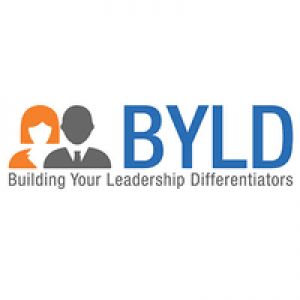Why In-house training matter?Posted by BYLD Group on April 21st, 2021 How to design an impressive in-house training program for your firm? You can customize the in-house training program as per the specific situation of your company, which includes its hiring schedule and processes. The work world is changing. The business leaders are well-aware of the value placed by their employees on having opportunities for training and upskilling into the workplace, for keeping up with those modifications. Professional training and development are a part of the foundation of an employee-employer relationship. Several surveys display firms that invest in training get benefitted from enhanced skill sets, increased productivity, and reduced turnover. Evaluate your requirements from in-house trainingFor designing the efficient in-house training program, start by researching what areas would benefit the most from betterment & whether or not training is the best way for achieving that betterment. The under-performing sales office may well benefit from additional sales training. The restaurant with plenty of consumer service complaints may benefit from consumer service training. However, the employee with a lot of work to be done might not be well-served by the training course which causes him/her to fall farther behind. Always remember that training takes up a lot of time, so aim the training efforts on those areas where in-house training is most possibly to prove effective. Also, you can take up the training course in how to design this program, which includes how to evaluate the training needs. Commit the resources & develop the structure of your in-house training planSimilar to any new effort, you should build the structure before deciding upon finishing touches (enroll the students). The structure constitutes a lot of actions that were crucial to ensuring success. Hiring the instructor, developing a curriculum, setting up labs & classrooms along building grading & attendance policies are all inevitable steps in establishing the foundation. Recognize the administrator for overseeing the overall effort and budget, somebody who is not the trainer. Through having the outside perspective, you guarantee balances and checks. The administrator might be the new service manager, owner, or somebody in HR, however not the instructor. Conduct your in-house training sessionsAfter finishing the training program’s design, you can start offering training to the employees. Training is not only for new hires, but you can also provide training to well-known employees. For example, one can offer the course on sales techniques to the new hires as the orientation procedure’s part & to the well-trained salespeople in the form of the annual refresher course. While conducting the training, undergo the steps in the training materials in a step-by-step, logical fashion. Say, in the sales training course, one should cover techniques for the initial sales contact, which is followed by techniques for overcoming objections & then for closing the sale. The 1st session with employees is an anxious, yet gratifying time. Trainers learn how to connect with their employees in an extensive variety of alternatives to deliver the instructions i.e., classroom training, trainer-led discussions, e-learning, webinars, and lab assignments etc. Review & Feedback : Just like students deserve the report card, the training program must also be reviewed after the completion of every school year i.e., annually. It is another advantage of having an administrator different from an instructor. The administrator should solicit & collect feedback on everything that is involved in the in-house training program (i.e., classroom & lab settings, instructors, tests, and assignments). It is the fiduciary duty of the trainer to offer the most suitable training program to employees. A part of the feedback must come from the supervisors/managers of the employees. Is their skill set improving? Are they utilizing lessons from school daily? What are those gaps which should be addressed? Just go for it! Setting up the in-house training program is the best thing to do. It is a commitment to the future of the company, & the sign to the employees about your commitment to them. Also, setting up your in-house training plan is a sign to a local labor market that the Company makes professional development their priority. Conclusion: The in-house training programs make sense for organizations that hire frequently, employ seasonal assistance or have special training requirements which would be poorly served by the generic course/seminar. Please note that gone are those days of the week-long residential training programs and this is the era of sharp, short interventions, like microlearning, with mobile access, and they will have more impact as well as relevance in the long run. If you want, you can also integrate the in-house training program with web learning, like TED Talks or YouTube. All in all, having access to thought leadership has never been easier. Nowadays, business leaders comprehend that the employees value in-house training opportunities. By providing learning opportunities that people wish to do, you can conveniently motivate everybody.
Like it? Share it!More by this author |


